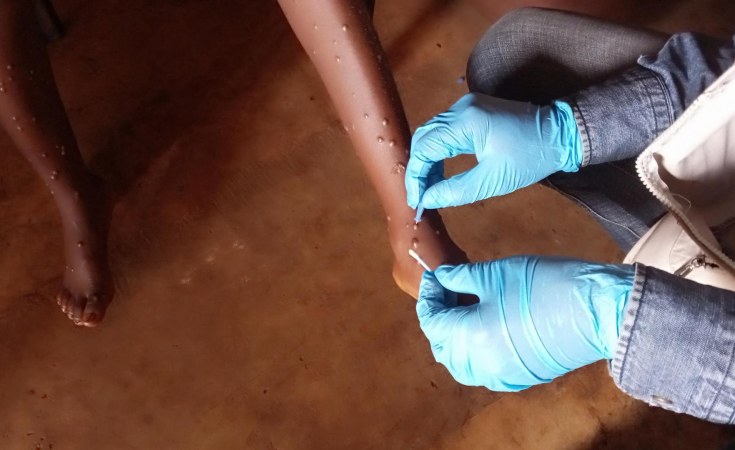Luau — Health authorities in the border municipality of Luau (Moxico, Angola) installed a health checkpoint on the border with Dilolo, Lualaba province, Democratic Republic of Congo (DRC), to track possible cases of mpox.
Dilolo is a city in the province of Lualaba, in the south of the Democratic Republic of Congo (DRC), which is located 12 kilometers from the municipality of Luau, in the province of Moxico (Angola).
Speaking to the Press, the municipal director of Health in Luau, Simão Fransciso Suku, said that a health post was created at the border with competent technicians to enforce biosecurity measures, before citizens enter Angolan territory.
He explained that at the border and in the Luau communities, prevention messages are transmitted to everyone who enters and leaves, in addition to monkeypox screening.
He reported that the cases recorded in the DRC are 500 kilometers from Dilolo, in the province of Lualaba, calling for the use of a mask, washing hands with soap and water, alcohol gel and other hygiene measures, which are essential at this time.
For her part, the municipal administrator of Luau, Ester Vumbi Celestino, informed that a meeting was held between the health authorities of Luau and Dilolo, in which the epidemiological cycle of Dilolo, considered 'less worrying', was presented.
Moxico shares a 330-kilometer border with the Democratic Republic of Congo and 747 kilometers with Zambia, through the towns of Luau, Caianda, Jimbi, Luhuza, Caripande Mussuma, Mitete and Malundi. Citizens of these countries use these locations for illegal emigration.
Mpox is transmitted by the monkeypox virus, which belongs to the orthopoxvirus genus. It is considered a viral zoonosis (the virus is transmitted to humans from animals) with symptoms very similar to those seen in patients with smallpox, although it is clinically less serious.
More than 22,800 cases and at least 622 deaths from Mpox have been recorded since January in 13 African countries, the African Union confirmed on Tuesday.
This is the second time in two years that the infectious disease has been considered a potential threat to international health, with the first alert being raised in May, after the spread had been contained and the situation was considered under control. LTY/YD/DOJ


